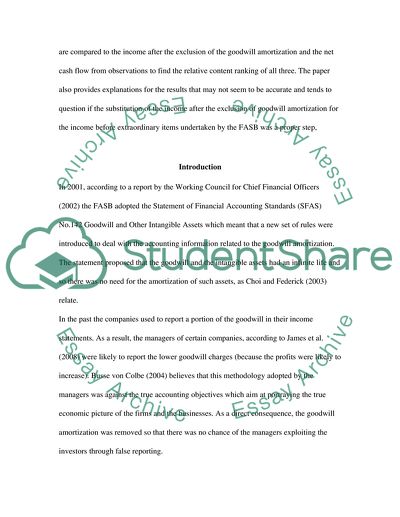Cite this document
(The Effect of the Goodwill Amortization on the Informative of Earnings Research Paper, n.d.)
The Effect of the Goodwill Amortization on the Informative of Earnings Research Paper. Retrieved from https://studentshare.org/finance-accounting/1737245-the-effect-of-the-goodwill-amortization-on-the-informative-of-earnings
The Effect of the Goodwill Amortization on the Informative of Earnings Research Paper. Retrieved from https://studentshare.org/finance-accounting/1737245-the-effect-of-the-goodwill-amortization-on-the-informative-of-earnings
(The Effect of the Goodwill Amortization on the Informative of Earnings Research Paper)
The Effect of the Goodwill Amortization on the Informative of Earnings Research Paper. https://studentshare.org/finance-accounting/1737245-the-effect-of-the-goodwill-amortization-on-the-informative-of-earnings.
The Effect of the Goodwill Amortization on the Informative of Earnings Research Paper. https://studentshare.org/finance-accounting/1737245-the-effect-of-the-goodwill-amortization-on-the-informative-of-earnings.
“The Effect of the Goodwill Amortization on the Informative of Earnings Research Paper”, n.d. https://studentshare.org/finance-accounting/1737245-the-effect-of-the-goodwill-amortization-on-the-informative-of-earnings.


